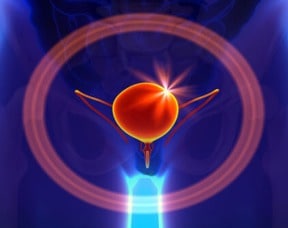Cystitis is the inflammation of the bladder. More often than not the inflammation is brought on by a bacterial infection which is called a urinary tract infection or UTI. Although more commonly affecting women cystitis is still an issue for men and can still adversely affect their quality of life. In men the increased risk for the condition is frequently caused by other health related issues such as an enlarged prostate (BPH), kidney stones or a narrowing of the urethra (urethral stricture).
Symptoms Of Cystitis
Symptoms of cystitis can occur within the course of several hours to a day and in particular with the elderly symptoms aren’t as apparent. Additional signs and symptoms of cystitis include:
- A frequent and persistent urge to urinate
- A burning sensation during urination (dysuria)
- Low-grade fever
- Pelvic discomfort
- Blood in urine (hematuria)
- Urine that is cloudy in appearance with a foul odor
Testing & Diagnosis
In order to properly diagnose cystitis your doctor will perform a physical exam and speak with you in detail about your medical history. You may also undergo one or more diagnostic tests at your doctor’s recommendation.
Urine Analysis: You will be asked to provide a “clean catch” urine sample for detailed analysis. Urine must not come into contact with your skin as to avoid bacteria that may alter your results. Your doctor will search for an extensive number of white blood cells in your urine as this can be a sign of an infection. Urine samples may also be cultured for signs of bacteria which will help in determining the cause. Treatment will be based on the identifying cause.
Cystoscopy: This test involves the insertion of a cystoscope. A cystoscope is a small fiber optic camera attached to a thin tube. The tube is then inserted through the urethra and into your bladder to look at your urinary tract for any signs of disease.
Ultrasound or X-ray: Though not usually needed, these methods are utilized when there are no apparent signs of infection.
Treatment For Cystitis
Since cystitis is a bacterial infection it will often be treated with antibiotics. Which antibiotics that will be used and for what specific amount of time depends on the bacteria that is found. Symptoms will generally disappear after a few days, but you should consult your doctor if symptoms persist or become more severe. Some of the types of antibiotics used to treat cystitis include:
- Amoxicillin
- Augmentin
- Keflex
- Duricef
- Ceftin
- Lorabid
- Rocephin
- Cephalexin,
- Suprax
All antibiotics should be taken as directed by your doctor. It’s important to ensure you finish taking all of your prescribed antibiotics Not completing the course of treatment allows the bacteria to regrow and subsequently become resistant to the antibiotic. At home you should also keep yourself properly hydrated by drinking plenty of water and cranberry juice (if you like the taste) to help flush out the bacteria from your system.


